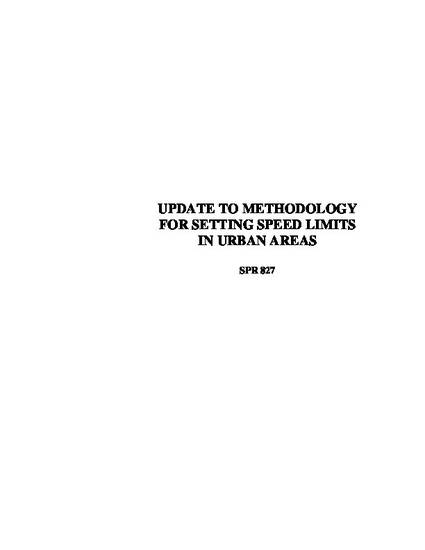
- Transportation -- Planning -- Oregon,
- Speed limits,
- Speed zoning (Traffic engineering) -- Effect on automobile drivers,
- Choice of transportation
Many cities in Oregon are requesting a comprehensive review of speed zoning guidelines and existing procedures for streets with high volumes of active travelers. The main goal of this research is to develop recommendations for alternate criteria for setting speed zones on roadways with a high percentage of active travelers. Literature pertaining to factors affecting operating speed, speed and safety, speed management, and current speed zone practices is reviewed. The selection of the site and performance criteria is discussed. Qualities and characteristics of the speed data utilized are given. Distinctions between neighborhood and non-neighborhood greenways are noted. A before and after analysis of speeds and hypothesis testing are performed. Factors affecting operating speeds are identified by linear correlation and regression analysis. The study finds a high degree of variability in the outcomes of Posted Speed limit (PSL) changes. However, PSL reductions are more likely to reduce speeds on neighborhood greenways, and motorized traffic volume and presence of a bike lane are key variables for predicting mean speeds.
